Stocks finished the week higher following the CPI report, which showed softer than expected core CPI. Again, as I have noted a few times, the stock market inflation fantasy will get harder from here. The easy comparables are now behind us, and to see the headline inflation rate finish the year around 3%, prices will need to be flat for the year’s balance.
Maybe that happens, and rent prices will slow enough to push the CPI sideways for the rest of the year. For the CPI to finish below 3%, the index needs to flat out fall, and while that can happen, the odds of that happening to me seem slim unless the US enters a recession or sees a significant slowdown.
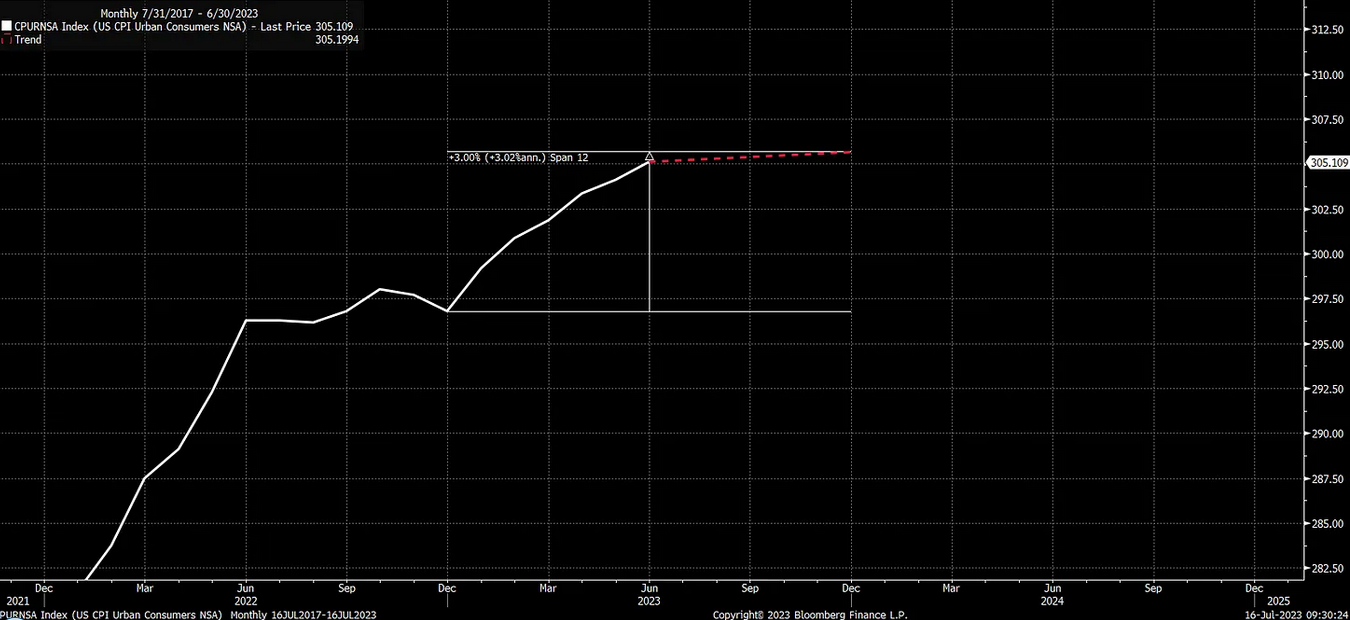
I don’t think a recession in 2023 is likely, given that nominal growth is still high. Unless nominal GDP growth falls a cliff over the next six months, I think the best case is that we are entering the stubborn part of the inflation process, which means we see little to no progress for the year’s balance. So again, I think the smooth period of disinflation is over, and the hopes of the Fed cutting rates to 0% are about to vanish from the stock market slowly.
So here we are now; it seems clear to me that most people still live in a world where they think rates are at zero percent and the Fed is conducting QE. Unfortunately, rates are now at 5%, and the Fed’s balance sheet is shrinking. The dynamics of the past three years no longer exist, and that will limit just how much financial conditions can ease. The funny thing about the Fed rate hiking cycle that I think few understand is that the more inflation falls, the more restrictive policy will get without the Fed raising rates.
Real monetary policy, the Fed Funds rate minus Core PCE, has yet to reach 2018 levels. So be aware that monetary policy’s tightening effect has yet to be completely felt, even after the last rate hike.

Based on the Fed’s SEP, the real Fed Funds rate should be 1.7% by the end of the year, or the 5.6% Fed Funds rate minus the 3.9% projected core PCE rate, and is expected to rise to 2% in 2024, as the core PCE falls to 2.6% and the Fed Funds rates fall to 4.6%. What is ironic here is that the market thinks the Fed will be cutting rates in 2024, but what is really happening is that Fed, by cutting rates slower than the expected inflation rate decline, is tightening monetary policy.
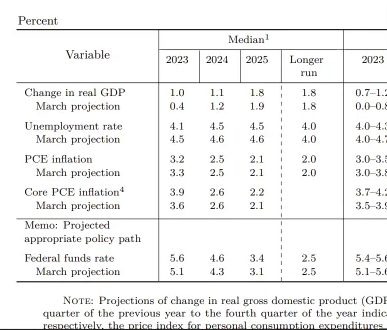
This will make it tough for financial conditions to ease much further as we move into the year’s second half. This is important because, as I explained in this week’s article, I noted that it appears, based on my research, that easing financial conditions have created the opportunity for a short-volatility dispersion trade to take root in the equity market, which is creating this artificial sugar high rally.
As I pointed out this week, the S&P 500 is now overbought on both an RSI and Bollinger Band basis. Historically, when this happens, it either leads to a pullback or a period of sideways consolidation.
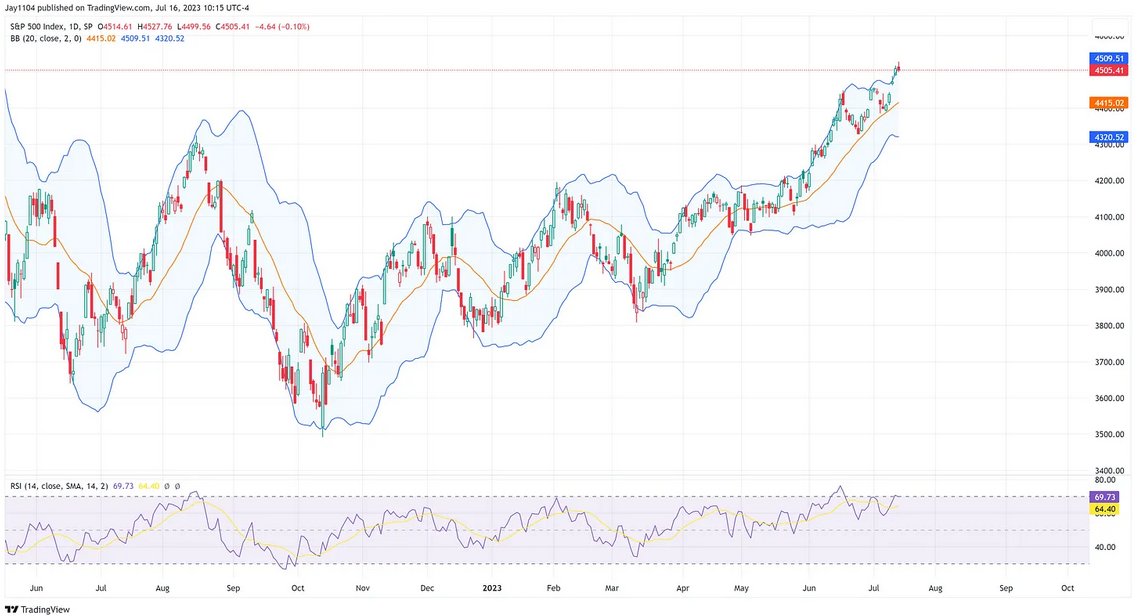
Also, absent the call wall rolling higher this week, a period of consolidation makes sense. This is after all option expiration, and the call wall on the S&P 500 for Friday’s expiration is at 4,500, and unless that call wall rolls higher, moving meaningfully beyond 4,500 will be challenging.

It is the same for the Invesco QQQ Trust (NASDAQ:QQQ) ETF, which has seen its price go above its upper Bollinger band while its RSI rose above 70. Also, this would suggest that the index is due to consolidate sideways or pull back some.
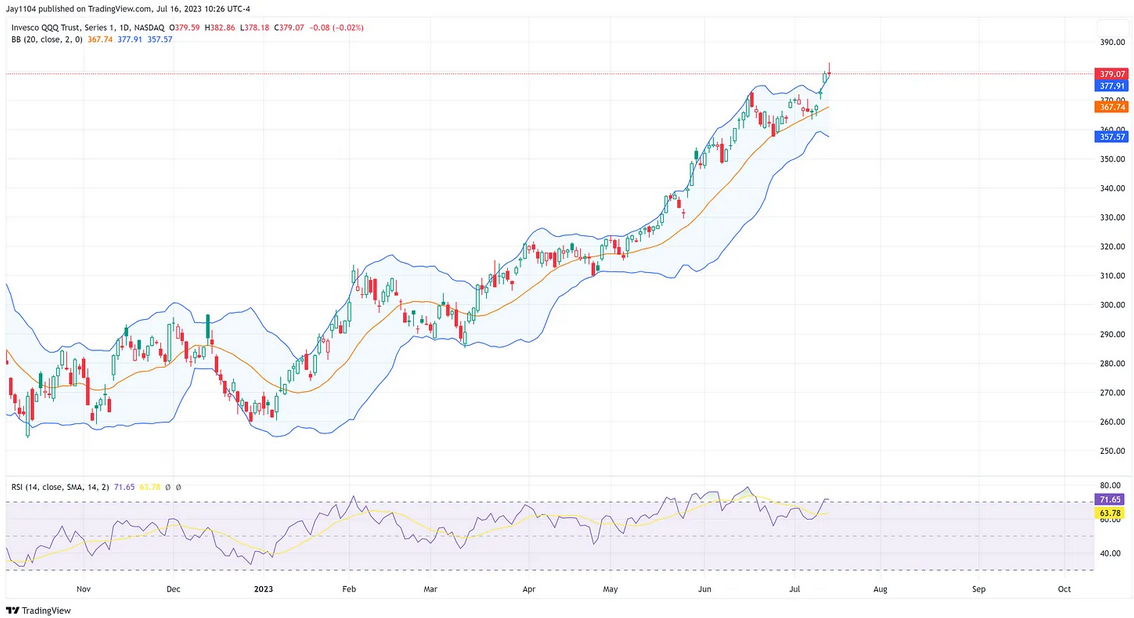
The QQQ call wall is at $380, and unless that call wall rolls higher, it would also indicate that this ETF is likely to trade sideways or lower this week.

This overbought condition is also present in Meta Platforms (NASDAQ:META) and suggests the stock is due to either pullback or consolidation sideways.

Tesla (NASDAQ:TSLA) will be reporting results this week too, and I do not follow this company nearly as closely as when I owned it between 2014 and early 2022. Still, I know that cutting prices and selling more cars probably means the company is sacrificing some of that automotive gross margin investors care so much about.
The stock has separated from its earning estimates, and either the stock has correctly called a turn higher in 2024 earnings estimates, or the stock has run ahead of itself. People will always make these dumb comments that fundamentals do not matter.
Still, you can see in the chart below that much of the stock’s success has been driven by rising earnings estimates, and its decline was due to falling earnings estimates. So yes, the trend and direction of fundamentals matter a lot. Lower margins should translate to lower earnings. So watch those results closely this week; if margins are weak and earnings estimates get cut further, the stock will struggle to maintain its positive momentum.
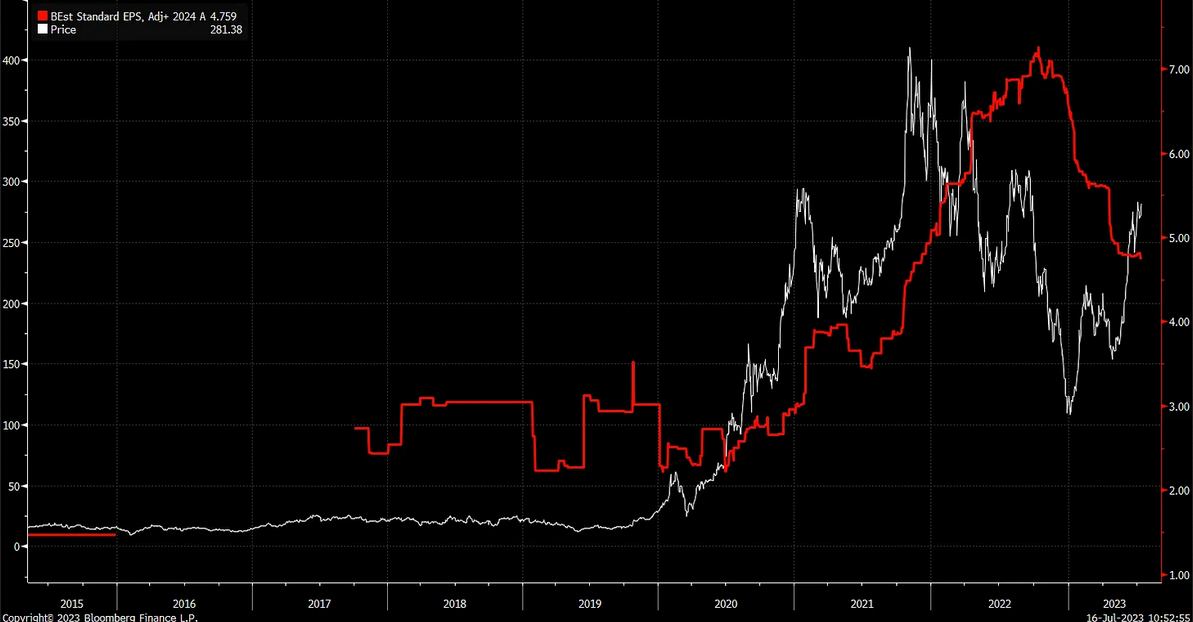
Additionally, the call wall for Tesla this week appears to be at $300, so based on that, there is limited upside following these results.

I think Taiwan Semiconductor Manufacturing (NYSE:TSM) may be the most important earning release of the week since these guys make most of the stuff for Nvidia (NASDAQ:NVDA). Analysts’ earnings estimates for TSM aren’t great looking and have seen little to no improvement for 2024, so either things outside of Nvidia are bad, and even all of Nvidia AI success hasn’t done much to improve things for TSM, or Nvidia may end up falling flat on its guidance. Hey, they can always blame supply chain issues if they miss guidance.
Clearly, TSM’s stock has gotten a big boost from all the AI hype, and I have doubts for some reason. If TSM doesn’t provide blockbuster guidance and earnings estimates do not turn higher, what does that mean for Nvidia?

This Week’s Free YouTube Video:

